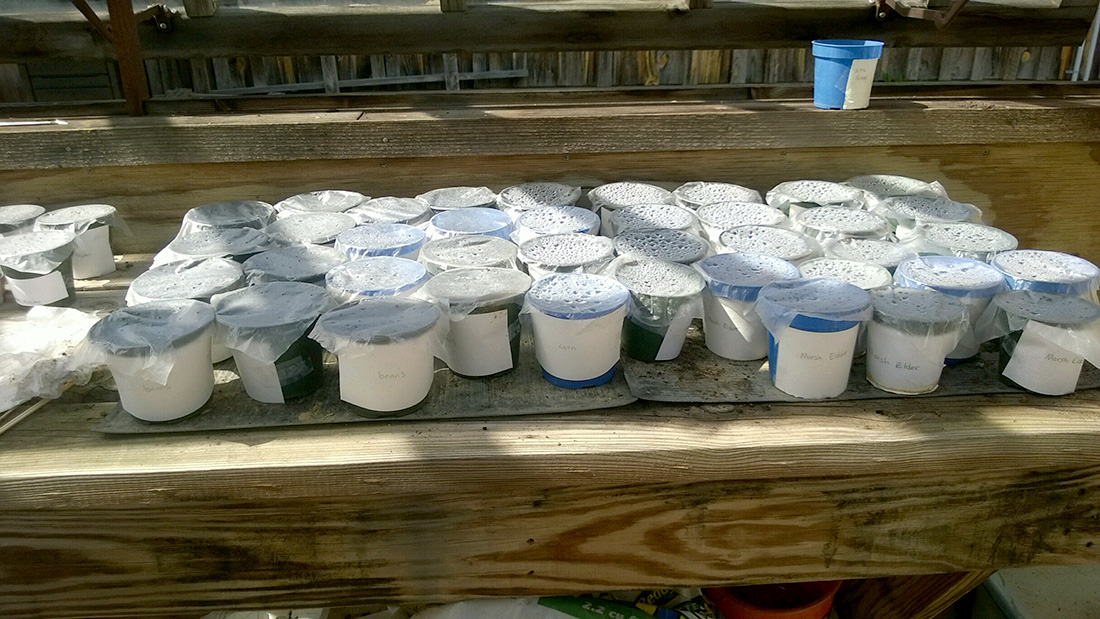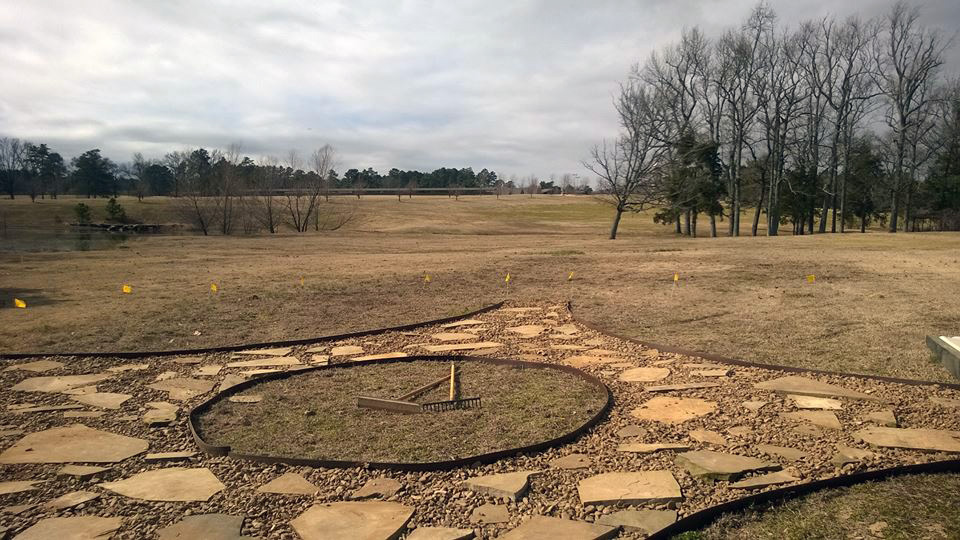
Emily Beahm (Arkansas Archeological Survey, WRI Research Station)
The WRI station is developing a Woodland period Native American garden at the station. Similar to the Plum Bayou garden designed by Dr. Elizabeth Horton at the Toltec Archeological Research station we will be planting species that were used by Native Americans before the widespread use of corn around A.D. 1000. These ancient crops include sunflower, goosefoot, maygrass, little barley, and a particular kind of squash. In addition to these food plants, we will also be planting species such as rattlesnake master, milkweed, and dogbane, which were used as fiber to make cordage.
In addition to this Woodland period garden, we will also be planting a Mississippian period “Three Sisters” garden in a different garden plot at the station. This plot will include corn, beans, and squash in addition to sunflowers. There will also be a separate bed with teosinte plants to show the origin of corn.
Native American gardening tool replicas have been made to use in these gardens. We will experiment with harvesting, processing and preserving these plant foods using traditional techniques. We hope to get volunteer assistance in all stages of this project.

Contact Dr. Emily Beahm at the WRI Research Station for more information, or follow the garden's progress on Facebook.

